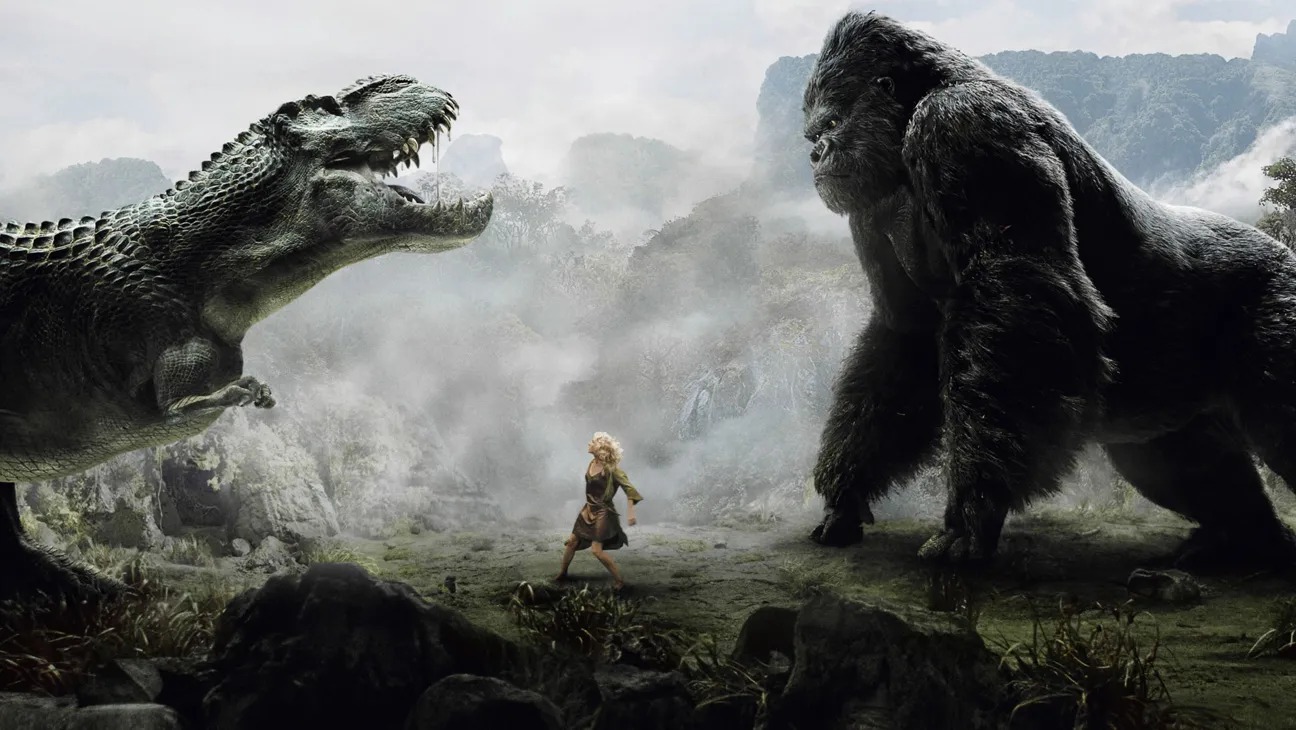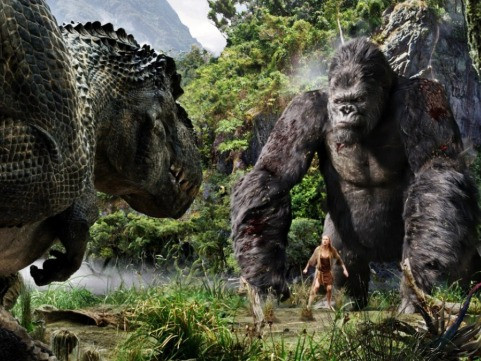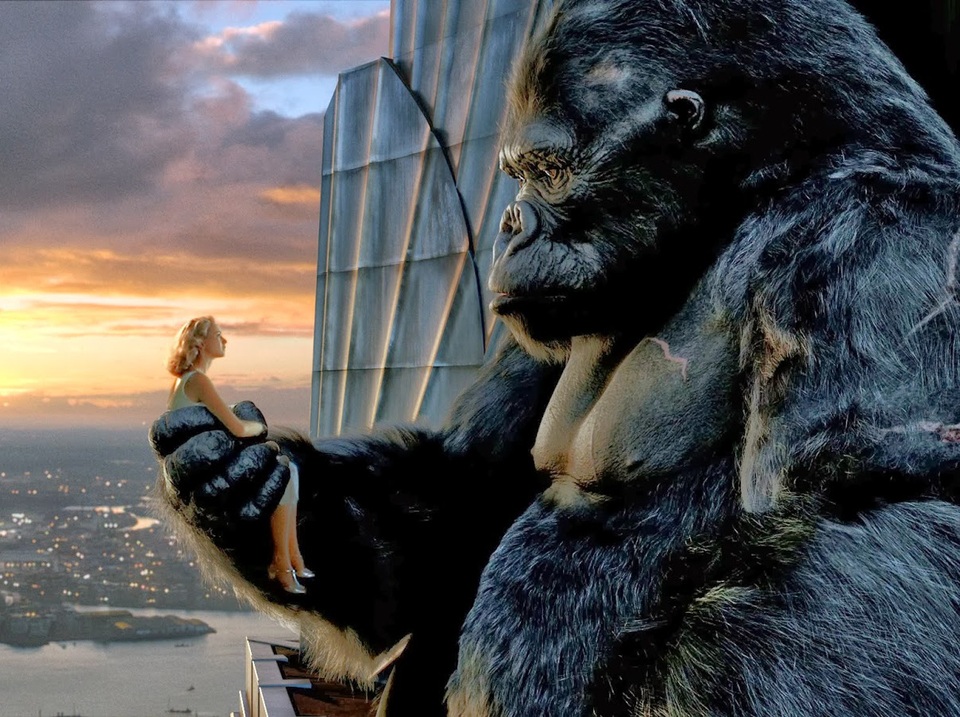King Kong (2005)

Peter Jackson’s 2005 remake of “King Kong” is a cinematic tour de force that combines breathtaking visual effects with a poignant narrative. Set against the backdrop of the Great Depression, the film pays homage to the classic 1933 original while infusing the story with modern cinematic techniques and a deeper emotional resonance.
The narrative follows filmmaker Carl Denham (played by Jack Black) and aspiring actress Ann Darrow (played by Naomi Watts) as they embark on a perilous journey to the mysterious Skull Island. There, they encounter the legendary giant ape, King Kong, who becomes captivated by Ann’s beauty. Captured by the island’s inhabitants, Ann becomes a sacrificial offering to Kong, setting off a chain of events that leads to a thrilling adventure filled with action, danger, and ultimately, a tragic tale of love and loss.

Central to the film is the character of King Kong himself, brought to life through groundbreaking visual effects and motion capture technology. Kong is depicted not merely as a monstrous creature, but as a complex and sympathetic figure with human-like emotions and intelligence. Through his interactions with Ann, Kong’s protective instincts and capacity for tenderness are revealed, transforming him from a fearsome beast into a tragic hero.
The relationship between Ann and Kong forms the emotional core of the film. Despite the vast physical and species divide between them, a genuine bond of empathy and understanding develops, highlighting the universal themes of loneliness, longing, and the search for connection. Ann’s initial fear of Kong evolves into compassion and empathy, while Kong’s fierce protectiveness of Ann evolves into a poignant expression of love and loyalty.

Thematically, “King Kong” explores the consequences of human greed and exploitation. Carl Denham’s obsession with capturing Kong for profit drives much of the narrative, leading to disastrous consequences for both the expedition crew and the inhabitants of Skull Island. The film critiques the exploitative nature of entertainment and media, questioning the morality of using creatures like Kong for personal gain at the expense of their well-being and natural habitats.
Visually, “King Kong” is a spectacle of epic proportions. From the lush jungles of Skull Island to the towering skyscrapers of 1930s New York City, Peter Jackson’s meticulous attention to detail immerses viewers in a richly textured world that blends historical realism with fantastical elements. The action sequences, including Kong’s iconic battle with prehistoric creatures and his climactic rampage through Manhattan, are masterfully choreographed and visually stunning, showcasing the film’s technical prowess and cinematic grandeur.

At its heart, “King Kong” is a poignant exploration of the fragility of life and the enduring power of empathy and compassion. The tragic fate of Kong serves as a powerful reminder of the consequences of human hubris and the importance of respecting and preserving the natural world. Through its compelling characters, breathtaking visuals, and emotional resonance, “King Kong” (2005) transcends the boundaries of its genre to deliver a timeless tale of love, sacrifice, and the indomitable spirit of a misunderstood creature.
In conclusion, Peter Jackson’s remake of “King Kong” (2005) stands as a monumental achievement in cinematic storytelling, blending cutting-edge visual effects with a heartfelt narrative that resonates with audiences of all ages. By reinventing a classic tale for a new generation, the film pays homage to its predecessors while offering a fresh perspective on timeless themes of love, loss, and the consequences of unchecked ambition. As a testament to the enduring power of cinema, “King Kong” continues to captivate and inspire audiences, reaffirming its place as a modern classic in the pantheon of adventure epics.











